With the help of advanced tech marvels such as the NEOWISE telescope, Atacama Large Millimeter/submillimeter Array (ALMA), Pans-STARRS1, and Catalina Sky Survey, NASA has shed light on an asteroid that is expected to pass Earth by a close margin on February 27. While the asteroid will come close to Earth, it is not expected to impact the surface, the US Space Agency has further revealed. Know the details of this close encounter with Asteroid 2024 CT7.
Earth News, Tips, Tricks & Ideas
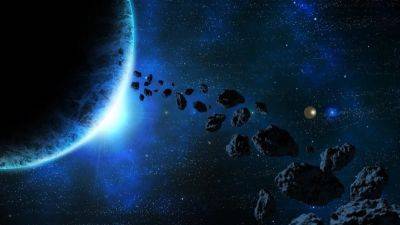
NASA says 120-foot asteroid will pass Earth by just 5.2 mn km; Know how fast it is moving
Like previous months, February has witnessed multiple asteroid approaches. While an asteroid did not pass Earth yesterday, NASA says that two asteroids will come close to the planet today, February 28. The asteroids were tracked with the help of advanced tech marvels such as the NEOWISE telescope, Atacama Large Millimeter/submillimeter Array (ALMA), Pans-STARRS1, and Catalina Sky Survey. While the asteroid will come close to Earth, it is not expected to impact the surface, the US Space Agency has further revealed. Know the details of this close encounter with Asteroid 2024 CE7.
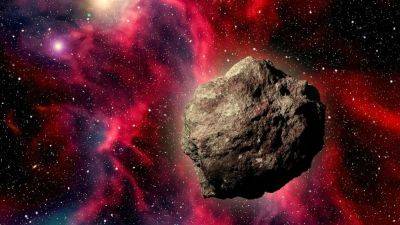
Two asteroids will pass Earth by close margins soon, says NASA; Check speed, size, and other details
A pair of asteroids have been spotted travelling Earthwards in their orbit by NASA. The US Space Agency issued an alert that both of these space rocks have been designated as Near-Earth Asteroids, and will pass the planet by close margins. These close approaches follow the continuing trend of asteroid flybys in recent months. From size and speed to distance of close approach, know all about these asteroids.

Luxury space capsule set to take the uber-rich to the edge of space: Check price, amenities, more
We have seen so many space movies with scientists and astronomers travelling to space and building a home with their families. However, a Florida-based company called Space Perspective is going to make the fictional space film into reality by showcasing its luxury space capsule with amenities that will simply blow your mind. While the capsule aims to take humans to the edge of space, the trip can only be afforded by the super-rich. Also, the capsule will not include a rocket flight but it will use a space balloon. Sounds interesting, right?

Cosmic Drama Unveiled: How Precious Metals Travel from Space to Earth's Mantle
A recent breakthrough in Earth science sheds new light on the origins of precious metals like gold and platinum, challenging conventional wisdom. This groundbreaking research, conducted by scientists at Yale University and the Southwest Research Institute (SwRI), was published in the journal Proceedings of the National Academy of Sciences, reports Interesting Engineering. Here's a summary of the findings:

Multiple M-class solar flares erupt on the Sun triggering radio blackouts on Earth, reveals NOAA
Yesterday, December 5, a minor solar storm struck the Earth sparking auroras in the arctic circles. It was a minor affair, but the solar activities have been relentless with the Sun nearing the peak of its solar cycle. In the last 24 hours, three separate M-class solar flares have erupted on the Sun, releasing extreme ultraviolet radiation. The radiation has resulted in triggering short-wave radio blackouts on Earth, as per data from the National Oceanic and Atmospheric Administration. It is unclear at this point whether any of these eruptions have released coronal mass ejections directed at our planet, which could further cause solar storms in the coming days.
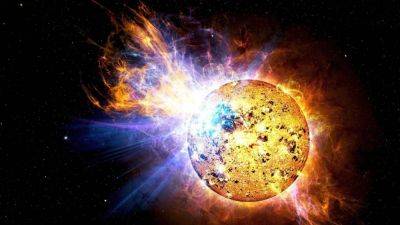
Two CMEs hit Earth, spark extra strong solar storm; NASA model shows more could be on the way
The solar activity on Earth has intensified. Yesterday, December 1, it was reported that a second coronal mass ejection (CME) was headed for the Earth which could turn the ongoing solar storm even more intense, and exactly that happened. A few hours earlier, the second CME made an impact and sparked an incredibly powerful G3-class solar storm. The storm resulted in some of the brightest aurora displays seen across the world. While it has begun subsiding slowly, a NASA model has shown that more CMEs are headed toward the Earth and might make contact with our magnetosphere before the end of the day.
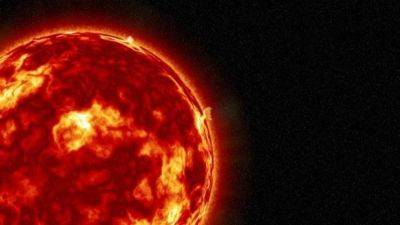
CME strikes Earth, sparks solar storm; but it can get worse, reveals NOAA; here is why
It has been said multiple times that the Sun will pick up solar activity as it ramps up to the peak of its solar cycle, but we are finally witnessing the onset of it. Last month was riddled with solar storms and short-wave radio blackouts triggered by solar flares. Now, things are getting worse. According to the National Oceanic and Atmospheric Administration (NOAA), a coronal mass ejection (CME) hit the Earth a few hours ago and sparked a minor solar storm. While it is not very dangerous, things are going to get worse. The space weather monitoring agency also revealed that another CME is on its way, and it can cannibalize the former to produce a really strong solar storm on Earth later today.
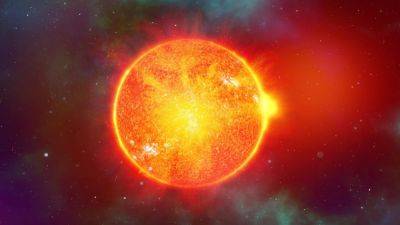
NASA detects CME that can partially hit Earth on Nov 30 and spark solar storm; Auroras expected
On Sunday, a coronal mass ejection (CME) struck the Earth sparking a 15-hour-long solar storm that peaked at G2-class intensity. The impact was so strong that auroras were visible across most of Europe despite it being a moonlit night. As the planet is still recovering from it, NASA models have detected yet another CME that is partially targeting the southern hemisphere of the planet. It can reach the Earth by November 30, and early reports suggest that while the storm is expected to be a minor one, it will still spark auroras at high latitudes.
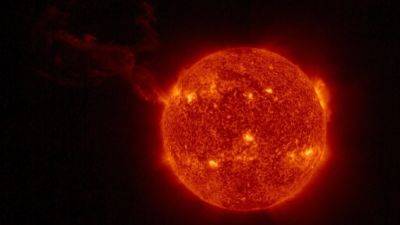
M-class solar flare erupts on the Sun, shows NASA; blackouts triggered on Earth, solar storm possible
Yesterday, a massive sunspot spanning 200,000 kilometers containing as many as 12 dark cores was reported on the Sun. As per information from the NASA Solar Dynamic Observatory (SDO), there was a high chance that it could explode at any moment, and that is exactly what happened just an hour ago. An M-class solar flare was seen erupting on the sunspot, whose extreme ultraviolet radiation sparked a short-wave radio blackout on the Earth. While NASA has not been able to confirm the presence of any Earth-bound coronal mass ejection (CME), this information should be revealed in a few hours' time.

From sparking powerful solar storms to causing forest fires, know the dangers of solar winds
Solar winds have been part of the reason behind the recent series of solar storms that have struck the Earth in the last couple of weeks. They either sparked solar storm incidents or amplified an active storm. But often, we tend to overlook its potential to cause damage when compared to solar flares and coronal mass ejections (CME). However, as per NASA officials and research papers, these stellar winds are capable of not only sparking solar storms but also triggering forest fires, and damaging spacecraft, potentially putting the lives of astronauts in danger.
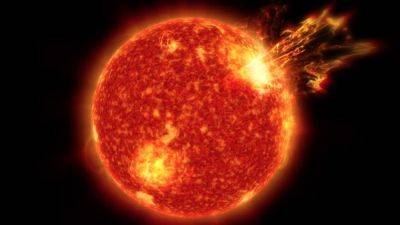
Earth to suffer direct CME hit, new NASA model reveals; To spark solar storm and auroras
Yesterday, the NASA Solar and Heliospheric Observatory (SOHO) detected a coronal mass ejection (CME) that appeared to be coming towards the Earth. The early assessment revealed that it could hit the Earth in the late hours of November 11, although it wasn't clear whether the strike would be a direct one or a glancing blow. Earlier today, NASA ran the data through its prediction model and we have a much clearer picture of what is to come. The CME is now expected to hit the Earth tomorrow, November 12. It is also expected to be a head-on collision, and the solar storm can reach an intensity of G2-class.

NASA SOHO spots CME headed for Earth tomorrow; Solar storm may spark auroras, radio blackouts
Even with just six Earth-facing active sunspots on the Sun, the solar activity in the last fortnight has been more intense than many months combined this year. This is the second most intense solar storm spell we have seen since March when two G3-class storms were spotted in the same month. To make matters worse, it is not likely to stop anytime soon. The NASA Solar and Heliospheric Observatory (SOHO) has detected a halo-shaped coronal mass ejection (CME) headed towards the Earth. The data highlights that it will make strike the Earth tomorrow, November 11, in the late hours, triggering a solar storm that can be as intense as G2-class.

There is money in space junk! This company just landed a cool $5 mn contract/investment
The low Earth orbits are becoming a dangerous playing field due to the accumulation of space debris. This is the term used to describe defunct human-made objects present in the orbit of the Earth. These include defunct satellites, various launch vehicle stages, fragments of rockets, and other man-made waste. Also known as space junk, it has become a big challenge for space agencies that plan to launch their spacecraft, and organizations that aim to place important satellites in these orbits. But what some look at as a problem, others look at as an opportunity. A space tech startup, Kall Morris Inc. (KMI), is among those who are working to remove this space debris. And recently, it has raised a big amount in contracts and investment money.
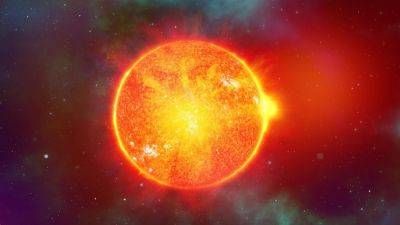
Solar storm creates history? Powerful strike sparks RARE auroras in Peru
There are some things we know about solar storms. First is that they strike the Earth near the polar region, due to the magnetic field lines of our planet. We also know that this is why auroras are primarily seen in the high latitude regions, as due to high concentrations of charged particles in the atmosphere, oxygen and nitrogen get ionized and create these fantastic colors. As the charged particles move down south, the charged particles dissipate and auroras are not visible. However, the solar storm strike on the night of November 5 and early morning of November 6 might well have created history after sparking auroras as far south as the equator itself.

NASA's OSIRIS-REx asteroid Bennu sample unveiled at the Smithsonian museum
In September, NASA reached a unique milestone when its ambitious project, the OSIRIS-REx mission, was completed successfully. The spacecraft traveled 6.2 billion kilometers to meet an asteroid named Bennu in deep space, collected samples, and then delivered them to the Earth. These samples, collected for the first time ever by humanity, are expected to answer some of the biggest questions around the origin of the Earth, the life of the planet, and the solar system itself. And now, a small piece of this sample has been placed in the iconic Smithsonian's Museum of Natural History so that people can come and appreciate the historic feat.
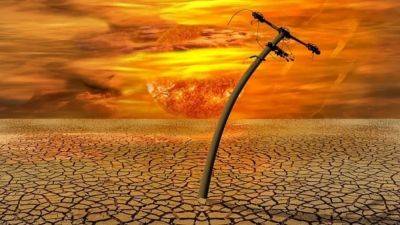
Powerful solar storm strikes! More possible today as solar winds rush towards the Earth
Last week, a forecast revealed that three coronal mass ejections had a probability of striking the Earth early this week. The forecast had given different probabilities based on how different circumstances can affect the intensity of the resultant solar storm. It turned out that in a rare coincidence, the conditions were met to spark the worst-possible solar event, and a G3-class storm ensued yesterday, November 6. While a lot of it has subsided, the solar storm event does not look like it is going to subside anytime soon. A stream of solar winds is headed for the Earth, and it can spark another round of solar storms, that can reach the intensity of G2-class, which is possible today, November 7.
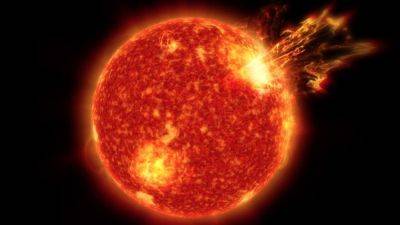
As many as 3 CMEs could hit the Earth today; Solar storm strike likely - Check details
This week's solar storm prediction models claimed that today, November 4, is likely to be the worst affected by solar activities. The prediction will likely come true as three separate coronal mass ejections (CMEs) are headed for the Earth. The first two of them are slightly off-target but the forecast says it can deliver glancing blows to the planet. But things can quickly change if they combine to form a cannibal CME. The third one is the riskiest, which is directly headed for the Earth. Overall, there is a chance that we may see a G2-class storm later today.

NASA detects CME rushing out of ‘canyon of fire’; Solar storm could strike on Nov 4
No solar storm strikes were seen on Halloween, thankfully. Most astronomy enthusiasts must remember the 2003 solar storm that struck on Halloween and resulted in NASA Solar and Heliospheric Observatory dropping altitude temporarily, and Sweden losing power for an hour. But trouble for the Earth is not over yet. A new coronal mass ejection (CME) was released as a result of a magnetic filament eruption on the region of the Sun known as the ‘canyon of fire'. NASA spotted it first, but its initial models predicted that it may miss the planet. But now, the National Oceanic and Atmospheric Administration (NOAA) forecast has said that it will sideswipe us, triggering a solar storm.
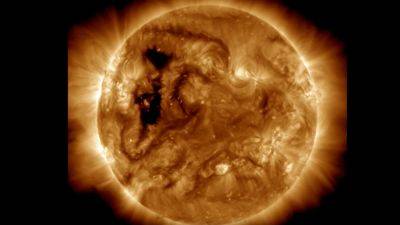
Solar storm strike possible soon, as solar wind stream rushes towards Earth; NASA reveals its origin
Just a couple of days ago, a sneaky solar storm struck the Earth, sparking auroras in the Arctic Circle. The reason for the storm was not known since no coronal mass ejection (CME) was expected to hit the planet. It turned out that a crack opened up in the magnetosphere, allowing solar radiation to easily pass through. Now, another similar incident is on the cards, only at a much higher intensity. A massive hole has opened up on the Sun this time which is releasing a stream of solar winds. It is expected to reach the Earth on October 30, when it can trigger a solar storm, as per the forecast. The NASA Solar Dynamic Observatory images show the hole through which solar winds are escaping.
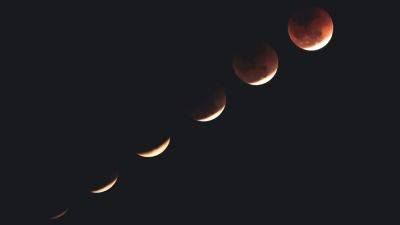
Lunar Eclipse 2023: When, where to watch 2nd Chandra Grahan of the year
Lunar Eclipse 2023: The Moon, Earth's natural satellite has long been one of the most central pieces of studies related to Earth. It impacts several occurrences on the planet, such as the rise and fall of tides. Just 14 days after Annular Solar Eclipse, 2023's second lunar eclipse is set to grace the skies. The first lunar eclipse of this year, the penumbral lunar eclipse occurred on May 5, 2023. According to NASA, this was the deepest penumbral lunar eclipse since 2017. Now, another lunar eclipse, also known as the Chandra Grahan, is set to take place in the next few days. Know all about the second lunar eclipse of 2023.

Solar storm barrage strikes Earth! NASA reveals massive impact effect
The solar storm event on October 20 has become somewhat of a mystery to astronomers and space weather physicists. The storm was triggered by a couple of coronal mass ejections (CME) that sideswiped the Earth and did not make head-on contact with the planet. They left the Sun one after the other in small eruptions, that should not have been carrying a high amount of solar matter or electromagnetic charge, but somehow its impact was far greater than some of the strongest CMEs we have seen in recent times. This is quite confusing as most forecasters had predicted a G1-class intensity for the storm, and while the storm itself was clocked at G1, the aurora display surpassed the intensity seen in that category. And now, a NASA image has been shared by a National Oceanic and Atmospheric Administration (NOAA) institute that shows the widespread impact of the solar storm.

Carl Sagan detected life on Earth 30 years ago – here’s how his experiment is helping us search for alien species today
It's been 30 years since a group of scientists led by Carl Sagan found evidence for life on Earth using data from instruments on board the Nasa Galileo robotic spacecraft. Yes, you read that correctly.
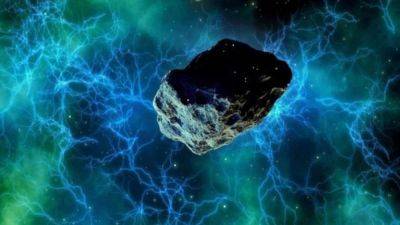
Apollo asteroid to pass Earth today, reveals NASA
For years, it has been known that the most likely cause of the extinction of dinosaurs was an asteroid impact. The most common theory behind the extinction is the Alvarez hypothesis, which claims that an asteroid struck Earth nearly 65 million years ago and wiped out entire species of dinosaurs. This theory is backed by some proof too as scientists have also discovered its impact crater, known as the Chicxulub crater, buried under the Yucatan Peninsula in Mexico. As per the hypothesis, the impact of the asteroid would have caused the formation of huge tidal waves and an impact crater almost 140 km wide. Lland material would have splattered into space, changing the Earth into a nuclear winter-like environment, ultimately leading to the demise of dinosaurs.
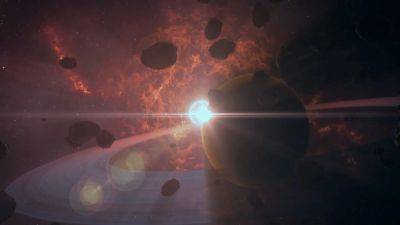
Apollo group asteroid to come closer than the Moon; Know details of approach
NASA has recently issued details about an asteroid designated as Asteroid 2023 TK15 that is expected to make its closest approach to Earth on October 20. This asteroid has been discovered and tracked using various advanced technological instruments such as the NEOWISE telescope, Atacama Large Millimeter/submillimeter Array (ALMA), Pans-STARRS1 and Catalina Sky Survey. Know all about it.
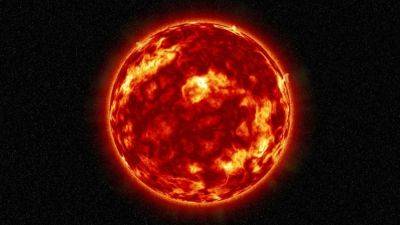
Magnetic filament eruption on the Sun may spark solar storm tomorrow, says NASA
On Monday, October 16, a powerful magnetic filament erupted on the Sun. In particular, the explosion of plasma took place on the active sunspot AR3467, which was earlier reported to have displayed signs of trapping a huge amount of delta energy. The eruption was so massive that it ejected solar matter and plasma into space, which is also known as coronal mass ejection (CME). The CME is now moving in the direction of Earth. While NASA models have assured that a direct hit is unlikely at this point, it is expected to sideswipe the planet, which is still enough to spark a solar storm. The storm is expected to arrive tomorrow, October 19.
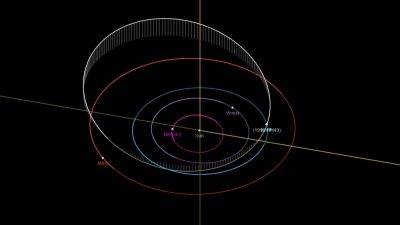
Potentially Hazardous Asteroid to pass Earth today! Know details
You may think asteroids are simply floating rocks in space and while it may seem so due to their appearance, it isn't quite the case. These space rocks can be classified into 3 types based on their structural composition. The most commonly found asteroids are S-type, which are made up of carbon-rich substances. On the other hand, S-type asteroids are made up mainly of silicate minerals and are less common. M-type asteroids are the least prevalent and they are primarily composed of metal. NASA recently sent out a mission to a metal-rich asteroid called 16 Psyche which is supposedly worth more than the whole planet's economy put together, at a staggering $10 quintillion!
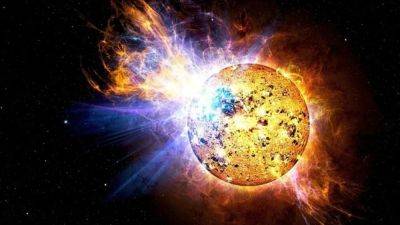
Sunspot could hurl out M-class solar flares, reveals NASA
Like asteroids, solar flares also pose a threat to Earth. Strong solar flares can cause power and radio blackouts for several hours or even days, spark auroras, give people in airplanes a dose of radiation and can even influence elections! Technological instruments are especially at a risk during flares. This is because when cosmic rays strike Earth, they release various particles like energetic neutrons, muons, pions and alpha particles. Although these particles do not affect the human body, they can pass-through integrated circuits and cause damage, often changing the data stored in the memory. With the solar maximum approaching in the next few years, the Sun's activity is expected to rise, and it could result in more solar flares.

Asteroid 2023 TT8 to get very close to Earth today, NASA reveals
Asteroids are abundant in space and as many as 1298148 have been discovered to date. To track and study these space rocks which are mainly present in the asteroid belt between the orbits of Mars and Jupiter, NASA has several advanced ground and space-based telescopes in place. NEOWISE telescope, Atacama Large Millimeter/submillimeter Array (ALMA), Pans-STARRS1 and Catalina Sky Survey are just some of the telescopes and observatories that help study asteroids and remove any uncertainties around their potentially close approaches to Earth.
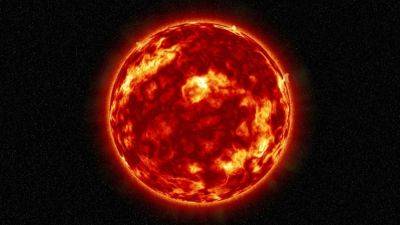
Ahead of solar eclipse, fast-moving solar winds to spark a powerful solar storm today on Earth
Yesterday, it was reported that a co-rotating interaction region (CIR) was forming near the magnetosphere of the Earth due to the intermixing of slow and fast-moving solar winds. The situation is set to worsen today, October 13, as fresh solar winds escaping from a worm-like coronal hole will soon strike the Earth and trigger a powerful solar storm event. This event is expected to take place just before the annular solar eclipse occurs in the early hours of October 14.

House-sized asteroid hurtling towards Earth for close approach, NASA reveals
With its advanced tech such as the NEOWISE telescope, Atacama Large Millimeter/submillimeter Array (ALMA), Pans-STARRS1 and Catalina Sky Survey, NASA has revealed details about an asteroid that will come close to Earth. An asteroid, given the designation of Asteroid 2023 TC1, is on its way towards Earth and could make its closest approach to the planet today, October 13.

Incoming CIR could spark solar storm on Earth TODAY; Know all about it
The Earth this month has seen quite a few impacts due to the solar activities on the Sun, including a couple of solar flare eruptions and consequent radio blackouts, but so far we have not seen any solar storm events. But that is expected to change later today, October 12, as a National Oceanic and Atmospheric Administration (NOAA) forecast has revealed that our planet is likely to be hit by a co-rotating interaction region (CIR) that can spark a solar storm event. Know the likely impact of this solar storm, and why events like CIR occur.
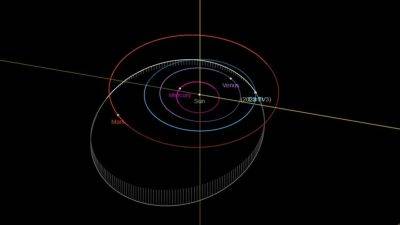
Wow! Asteroid 2023 TV3 to pass Earth 4 times closer than the Moon! Know details
NASA, ESA and other space agencies have a suite of ground and space-based telescopes and observatories to track and monitor asteroids. Despite the presence of these technological marvels, an asteroid snuck past all of them! The asteroid, named Asteroid 2023 NT1, made its closest approach to Earth on July 13 when it entered Earth's 60,000-mile radius, which is 4 times closer than the Moon! It was not a small rock either, as scientists later revealed it was nearly 200 feet wide, about 4 times the size of the Chelyabinsk asteroid that caused massive damage in Russia. It was at last found by the Asteroid Terrestrials-Impacts Last Alert System (ATLAS) observatory in South Africa on July 15.

NASA detects massive sunspot that can trigger extreme solar storm activity
If you've been curious about the recent surge in solar activity, it's important to understand that scientists have forecast the upcoming peak of the current solar cycle for mid-2025. This peak, referred to as the Solar Maximum, signifies the period when solar activity reaches its zenith within the 12-year cycle. This also explains the occurrence of two distinct solar flare events in the last 24 hours, both of which resulted in radio blackouts on Earth. And now, NASA's Solar Dynamics Observatory (SDO) has spotted a troublesome sunspot with a strong delta charge that can explode anytime and hurl an Earth-directed coronal mass ejection (CME) to spark intense solar storm activity.
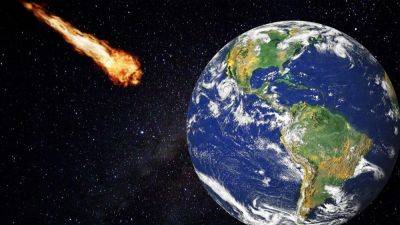
Asteroid hurtling towards Earth today at a mind-numbing 31394 kmph, reveals NASA
On September 8, 2016, NASA launched a historic mission - the Origins, Spectral Interpretation, Resource Identification, and Security-Regolith Explorer (OSIRIS-REx). It was launched to study a Potentially Hazardous Asteroid (PHA) called Bennu, which has a 1/2700 chance of impacting Earth between 2175 and 2195. After a 6-year journey that involved landing on the asteroid and collecting samples from its surface, the spacecraft finally returned the samples last month, after which they underwent a “nitrogen purge”. Today, NASA will finally open up the canister returned by the OSIRIS-REx spacecraft and show off the asteroid sample to the world in an event that will be live-streamed. You can watch it online here.
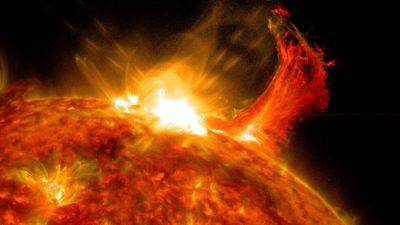
Solar flare erupts on Sun, detects NASA; blackouts over Australia, Solar storm likely
Despite multiple close calls, we have been quite lucky when it comes to solar storms. Even as multiple solar flares have erupted over the last 10 days, only one released a coronal mass ejection (CME) that made its way to the Earth. However, things can now change with the latest eruption that took place in the sunspot region AR3452. The NASA Solar Dynamics Observatory detected the eruption, and as per reports, it took place on the eastern limb of the Sun. If there was any CME directed towards the Sun, there would be another solar storm event in the next 48 hours.
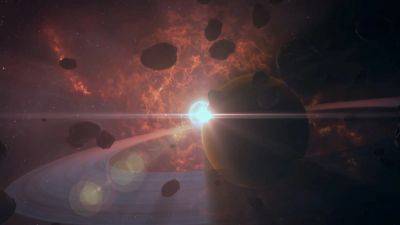
Asteroid to come closer than the Moon! NASA reveals details of close approach
To discover, monitor and study asteroids in space, NASA has several space telescopes and ground-based observatories in place. These include the famous Hubble Space Telescope and the new James Webb Space Telescope. Moreover, spacecraft such as Dawn, OSIRIS-REx, and Hayabusa2 have also helped in studying these ancient space rocks. As of now, there are 1,298,210 known asteroids in space and while not all of them are dangerous, some of them can get knocked off their orbit due to interaction with a planet's gravitational field such as Jupiter, and head towards Earth for potential impact. Therefore, to remove the uncertainties around the asteroid's approach, it is imperative that we track them.
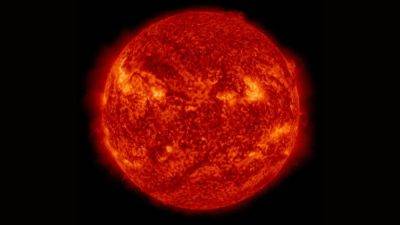
Solar flare alert! NASA observatory reveals threat of M-class flare
The Sun's activity is expected to increase in the coming months as we approach the Solar Maximum, the period in the solar cycle where activity is at its peak. It is expected to arrive in 2024 or 2025, and the number of sunspots has already exceeded previous predictions. During this peak, the planet could face CMEs, solar flares, solar storms, and other particles with potentially disastrous consequences. In a new development, NASA's Solar Dynamics Observatory (SDO), which carries a full suite of instruments to observe the Sun, has recently revealed that Earth could be in the firing line of a sunspot and dangerous solar flares could be hurled out that could have the potential to wreak havoc.
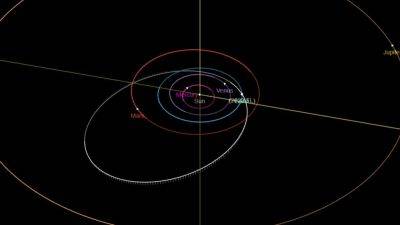
140-foot asteroid set for a close call with Earth, reveals NASA
Did you know that artificial intelligence (AI) is aiding in the discovery and study of asteroids? After aiding various industries across sectors such as education, healthcare, engineering and more, AI could also potentially help protect Earth against asteroids. According to a study published by the University of Washington, an algorithm, named HelioLinc3D, helped researchers discover a potentially hazardous asteroid. Asteroid 2022 SF289, which is almost 600 feet wide, was discovered during the algorithm's test in Hawaii and has not been deemed as dangerous in the foreseeable future.
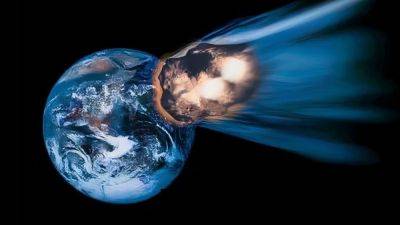
NASA reveals bus-sized asteroid rushing towards Earth today! Check speed, size, other details
NASA has several space and ground-based telescopes in place to discover, track, and study asteroids. But if you're a budding astronomer, you can help the space agency too! NASA's new Daily Minor Planet Project allows astronomers and skywatchers to help discover new asteroids and track them in data sets. To capture asteroids, the Daily Minor Project uses the NASA-funded, University of Arizona-based Catalina Sky Survey which captures nearly 1000 images every night. Due to this volume, NASA scientists fall short of personnel to study these images. After looking at the image, you just have to click on a yes or a no button and add a comment if necessary, before moving on to the next image.
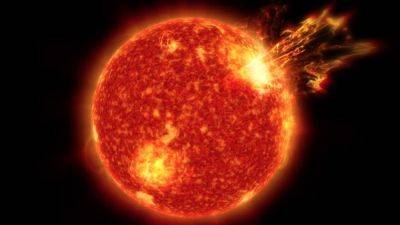
Gigantic CME headed for the Earth, can spark solar storm soon; NASA records the explosion
Yesterday, it was reported that October could see the same amount of solar activity as the previous month. Currently, there are eight different active sunspot regions on the Earth-facing side of the Sun, and any one of them exploding could send terrifying coronal mass ejections (CME). In fact, that is what happened on October 3, when a sunspot exploded and caused a solar flare to erupt, which in the process, hurled a massive CME towards the Earth. Now, as per a NOAA forecast, this CME is expected to strike our planet on Saturday, October 7. Further, NASA has also shared a video of the event that shows the scary moment when the explosion takes place and the CME releases.
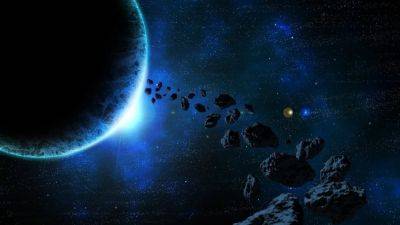
130-foot asteroid hurtling towards Earth for a close approach TODAY, says NASA
Asteroids often pass Earth at close distances, posing a threat to the planet with their terrifying approaches. Most of them might seem like they're just floating rocks in space, but did you know asteroids have differing compositions? These space rocks can be classified into 3 types based on their structural composition. The most commonly found asteroids are S-type, which are made up of carbon-rich substances. On the other hand, S-type asteroids are made up mainly of silicate minerals and are less common. M-type asteroids are the least prevalent and they are primarily composed of metal.

3 MASSIVE solar storms smacked into Earth; More to come? NASA reveals the truth
Yesterday, an unstable sunspot named AR3450 was spotted coming towards the Earth. It was estimated that any explosions within this region that could lead to a coronal mass ejection (CME) would be geoeffective and could lead to a solar storm event. However, it has not gone off so far and no solar flare activity has been noted. While astrophysicists are keeping an eye on it, a new report has highlighted that the month of September witnessed as many as three separate solar storm events, with two of them being significantly intense to the point of reaching the mid-latitude regions. With the peak of the 11-year Solar Cycle, the Solar Maximum, approaching soon, will the month of October be worse? We take a look at the data from the NASA Solar Dynamics Observatory (SDO) to know what's coming our way.
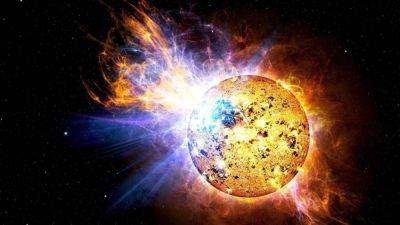
Solar storm ALERT! Unstable sunspot takes aim at the Earth; NOAA reveals incoming danger
While the Earth has escaped solar storms lately, it has been riddled with radio blackouts owing to solar flare eruptions that send extreme ultraviolet radiation toward our planet. Just yesterday, an M2.5-class solar flare erupted, but as it was not Earth-directed, the current predictions do not reveal any threat. However, this is set to change as an unstable sunspot named AR3450 has now appeared directly in front of our planet, and is crackling with solar flares. Space weather researchers believe any explosions now will be geoeffective. On top of that, the National Oceanic and Atmospheric Administration (NOAA) forecast models have predicted a chance for a solar flare eruption today, October 3, that can lead to powerful solar storm activity on Earth.

Asteroid bigger than Brooklyn Bridge hurtling towards Earth today! NASA reveals stats
Over the course of Earth's 4.5 billion-year-old history, there have been several major asteroid impacts that have had a significant impact on the future of the planet and helped humanity to emerge as a dominant force. Perhaps the most consequential impact occurred almost 65 million years ago when a mammoth 12-kilometer-wide asteroid crashed into the surface and obliterated nearly 70 percent of Earth's species including dinosaurs. The crater where the asteroid crashed can still be found today in the Yucatan Peninsula in Mexico. Such large asteroids have the potential to cause global devastation if they crash. Fortunately, NASA and other space agencies now have an arsenal of space and ground-based telescopes to discover and track them.
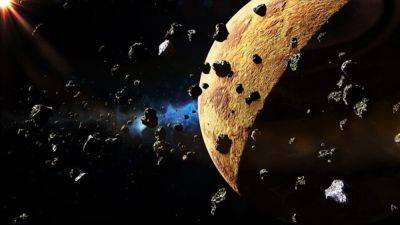
Aircraft-sized asteroid racing towards Earth! NASA reveals close approach details
NASA has been working on its Psyche mission for the last few years but hasn't been able to launch it yet. The space mission to the 16 Psyche asteroid has been delayed several times now, with the most recent happening on October 5. The $1.2 billion mission was set to launch via a SpaceX Falcon 9 rocket as part of NASA's Discovery missions but was delayed, giving NASA more time to reverify parameters that control the rocket's nitrogen cold gas thrusters. For the unaware, the 16 Psyche asteroid is made up of gold, nickel, and iron deposits and is supposedly worth more than Earth's economy.

Close encounter with asteroid today! NASA reveals details
To study asteroids up close, NASA and other space agencies have launched several space missions. The purpose of these missions is to study asteroids, minimize any uncertainties around their dangers, and determine whether we could extract resources from them in the future. The Double Asteroid Redirection Test (DART) was conducted last year where a spacecraft successfully collided with an asteroid to divert it from its path. Other missions include Dawn, OSIRIS-REx, and Hayabusa2.

Apollo asteroid hurtling towards Earth at fearsome speed! Know details
After yesterday's close call with Asteroid 2023 SF6, which passed Earth at a close distance of just 1.4 million kilometers, yet another asteroid approach is expected today. NASA has now revealed that an asteroid is expected to just about miss Earth. While it isn't expected to impact the surface, it could pass by very closely. NASA's Planetary Defense Coordination Office (PDCO), which is responsible for monitoring the skies against the threat of rogue asteroids, has issued a warning against the close approach of an asteroid designated as Asteroid 2023 SW6.
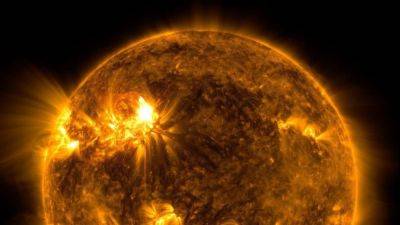
Unstable sunspots could hurl out X-class solar flares! Know the solar storm danger
In the past three days, we've seen several geomagnetic storms hit Earth. On September 24, a G2-class storm hit the planet and sparked rare, red auroras over Scotland. Yesterday, a G-1 geomagnetic storm was predicted to hit Earth due to a CME approaching the planet. The effects of the Sun have been felt in the form of solar storms, geomagnetic storms, and solar flares over the last few months. In turn, these phenomena have sparked further events such as auroras, blackouts, and disruption of radio communications. This solar activity is expected to increase even more as we approach the solar maximum, the period in the Sun's 11-year solar cycle where its activity is the highest.
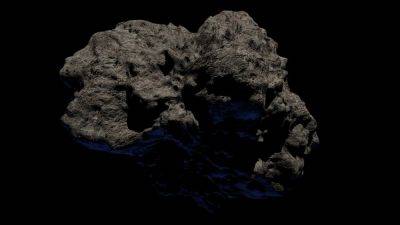
House-sized asteroid set for a close encounter with Earth; Know details
Asteroids are huge space rocks that revolve around in their orbits in space. According to NASA, some of these ancient space rocks present a potential threat of collision with Earth while others can help discover secrets of space. While most of them are located in the main asteroid belt between the orbits of Jupiter and Mars, these rocks often make close approaches to Earth as their orbits bring them within a couple of million kilometers of our planet. This presents a threat - could these space rocks somehow make their way to Earth? History has taught us that it certainly is possible. This can happen if an asteroid gets knocked off course, affected by a large planet's gravitational pull. Their orbits can also bring them extremely close to Earth.
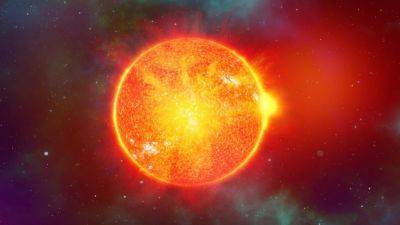
Geomagnetic storm could be triggered by CME today, says NOAA
Geomagnetic storm today: NASA's Parker Solar Probe on September 5 recorded one of the most powerful Coronal Mass Ejections (CMEs) ever as it flew by the Sun. According to NASA, the CME hurled out interplanetary dust to about 6 million miles, which is one-sixth of the distance between the Sun and Mercury. Astonishingly, the dust floating around in space replenished it almost immediately. Guillermo Stenborg, an astrophysicist at the Johns Hopkins Applied Physics Laboratory (APL) who led this study said, “These interactions between CMEs and dust were theorized two decades ago, but had not been observed until Parker Solar Probe viewed a CME act like a vacuum cleaner, clearing the dust out of its path.”

Geomagnetic storm caused by CME sparks rare red auroras over Scotland
Solar activity has been on an upward trend in the last few months and it is expected to increase as the Sun approaches the solar maximum. Earth is set to be in the firing line of CMEs, solar storms, geomagnetic storms, and more as the peak of the Sun's 11-year solar cycle nears. Therefore, it is imperative that we keep a check on the volatile nature of the Sun for any activity that threatens Earth. Astonishingly, the present cycle has exceeded the expectations of scientists as the number of sunspots till now has already passed the total number predicted in this cycle.
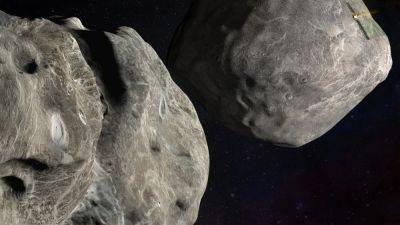
Aircraft-sized asteroid to fly past Earth today! Close call predicted by NASA
NASA has recently shed light on an asteroid whose orbit will bring it close to Earth. This Near-Earth Asteroid (NEA) is expected to make its closest approach to Earth today, September 22. Whilst this space rock will come very close to the planet, it is not expected to impact the surface. According to NASA, Asteroid 2023 RQ6 will pass by Earth at a distance of around 6 million kilometers. It is already on its way toward the planet, traveling at a blistering speed of 33912 kilometers per hour.
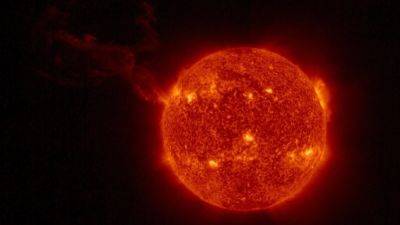
Solar storm fears on Earth rise after M8-class solar flare EXPLODES on the Sun
It appears that the Sun is not going to relent anytime soon. This week has been one of the most explosive ones when it comes to solar activity. We have seen regular solar flare eruptions and radio blackouts every day of the week, and there have been three different solar storm incidents, including a G3-class storm on the night of September 18-19, that resulted in aurora displays as far south as France. But now, another solar storm threat is building up for the Earth. Yesterday, September 20, an M8-class solar flare erupted on the Sun and released a coronal mass ejection (CME) cloud in the same direction as the Earth. Researchers are now trying to confirm whether it can hit our planet or not.
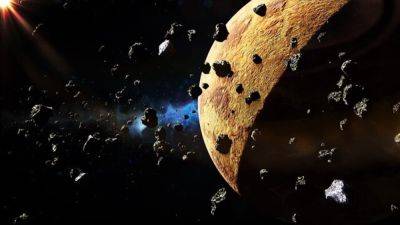
Close call with asteroid today, reveals NASA! Check its size, speed, and more
Asteroids often make close approaches to Earth, making it imperative to discover and track them for potential impacts. While these space rocks may rarely ever hit Earth, their size, and history of impacts is enough to spread fear in the scientific community. But it seems like asteroids aren't only plaguing us in real life, but in video games too. Players of Starfield, Bethesda's new open-world RPG, have been reporting issues of being followed by asteroids wherever they go! Not only in space, but asteroids are also accompanying players when they touch down on a planet's surface! NASA itself had earlier reacted to Starfield in a humor-filled way.
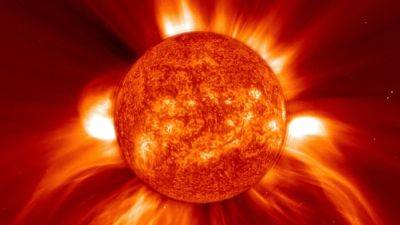
Solar storm STRIKES Earth! Intensely charged CME smashes into our planet, sparks terrifying blackouts
When it comes to terrifying solar storms, the last 24-hour period has been one of the worst since March 2023. The solar storm was triggered by a coronal mass ejection (CME) that was hurled towards the Earth's strike zone on September 18. There were speculations on whether it would hit the planet or not, but not only did it hit the Earth, it also arrived a day earlier than expected. Also, Earth was hit by multiple solar flare eruptions that caused severe radio blackouts. Know the full impact of this solar storm.

Asteroid set to get closer to Earth today than Moon is! Know details of this terrifying approach
NASA defines asteroids as ancient space rocks left over from the early formation of our solar system about 4.6 billion years ago. While most of these space rocks are located in the main asteroid belt between the orbits of Jupiter and Mars, the orbits of some asteroids bring them closer to Earth. Apart from the asteroid belt, there is the Kuiper belt which has a huge number of comets and asteroids in it too. Notably, in recent years, there have been several close calls with asteroids that have passed close to our planet. If they come close enough, some of the asteroids are termed as Near-Earth Objects.
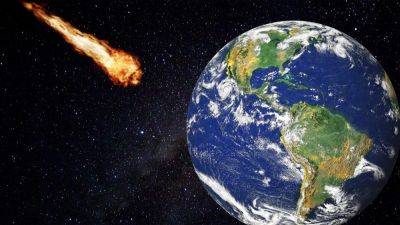
Asteroid hurtling towards Earth today! NASA clocks it travelling at 25785 kmph
Since asteroids are an ever-present threat, apart from NASA, other organizations too are engaged in efforts to establish protocols for planetary protection against such threats. The International Asteroid Warning Network (IAWN) and the Space Mission Planning Advisory Group (SMPAG) have joined hands in order to eliminate planetary threats. While IAWN is tasked with establishing protocols and developing communication plans to aid in decision-making, SMPAG is responsible for selecting the technology that is needed for the deflection of Near-Earth Objects (NEOs) like asteroids and finalize the measures for planetary defense.
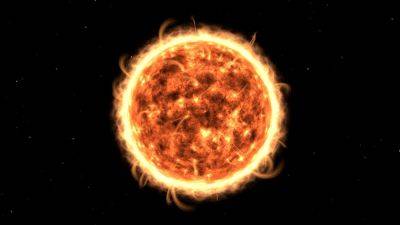
CME set to spark strong G2 geomagnetic storm, auroras on Earth
Geomagnetic storm today: Over the last few months, the Sun has become increasingly volatile and has been spewing out solar matter such as flares, CMEs, and other particles. This is due to the approaching peak of its 11-year solar cycle, also known as the solar maximum. During this period, solar activity is extremely high and the various planets, including Earth, come in the firing line of the resultant solar storms, geomagnetic storms, and more. Their frequency is likely to increase even more as we approach the solar maximum, which could arrive in 2025. Due to its volatile nature, NASA has several instruments monitoring the Sun's activity.

Solar storm alert! A CME just hit the Earth today and more are coming
Solar activity has been on the rise, with recent developments stoking concerns about potential repercussions for our planet. On September 17th, as predicted, Earth was hit by a Coronal Mass Ejection (CME) that was spewed out by the Sun earlier. While the initial impact did not trigger a geomagnetic storm, there's a possibility of minor G1-class storms being sparked today in the coming hours as Earth continues to traverse through the CME.

Double solar flare explosion sparks BLACKOUTS on Earth; Is another solar storm looming?
More solar activity has been detected on the Sun, and it could spell bad news for the Earth. Currently, there is a coronal mass ejection (CME) that is traveling towards us and is likely to strike the planet on Sunday, September 17. But before it can even hit us, more solar flares have erupted on the Sun. Two different M-class solar flares were detected exploding on the notorious sunspot region AR3429 which has already caused multiple solar flares so far. The extreme radiation from the solar flares sparked radio blackouts on the Earth, and scientists are now looking into the fact whether another CME was hurled towards the Earth and if it can spark another solar storm.
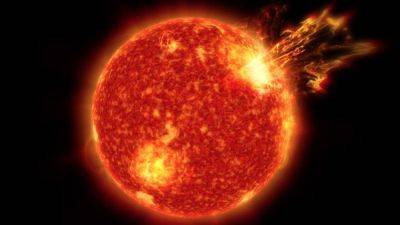
Solar storm warning! A massive CME can strike the Earth this weekend; Check details now
On Tuesday, September 12, the Earth was hit by an unexpected coronal mass ejection (CME) cloud, which triggered a powerful G2-class solar storm on Earth. The storm was moderate in intensity but it was still enough to interrupt wireless communication and trigger bright aurora lights in the higher latitudes. But the solar storm onslaught is not likely to stop anytime soon. Another CME has been unleashed from the Sun and it is again headed for our planet. As per prediction models, it is likely to reach the Earth on September 17 and deliver a glancing blow to the planet. Check the dangers that you should expect.
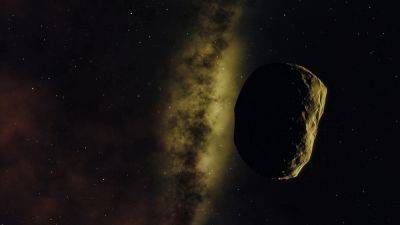
310-foot asteroid rapidly approaching Earth! NASA reveals details of close approach
NASA has issued a warning about a particular asteroid designated as Asteroid 2016 LY48. This near-Earth asteroid is expected to make its closest approach to Earth tomorrow, September 16. According to NASA, this space rock is approaching Earth at a fearsome speed of 38997 kilometers per hour. It is expected to pass Earth on September 16 at a distance of about 1.9 million kilometers.

After meteor crater discovery on beach, NASA reveals another imminent asteroid approach
Asteroids that pass Earth at close proximity present a potential threat of collision with Earth. In fact, there have been several close calls with asteroids recently. In February, a 2 feet wide rock broke into pieces about 33 kilometers above the Earth's surface. On July 6, a meteor crashed, bounced off a roof, and hit a woman in the chest who was sipping coffee on her terrace in the village of Alsace in Eastern France. Now, another meteor and its impact crater was reportedly spotted by a dog walker on Portmarnock Beach in Ireland.

Asteroid alert! 180-foot space rock set for first-ever close approach to Earth, shares NASA
For millions of years, asteroids have posed a threat to Earth. Although humanity only discovered its first-ever asteroid on January 1, 1801, these ancient space rocks have time and again impacted Earth's surface, altering the course of history. To understand asteroids better, and study the ones not located in the asteroid belt, NASA launched its Lucy mission on October 16, 2021, from the Kennedy Space Center in Cape Canaveral, Florida. It is aimed at studying the Trojans, a group of asteroids that orbit the Sun in two groups, according to NASA. It is built to seek out trojan asteroids millions of kilometers from Earth. Recently, the spacecraft caught a glimpse of its first Trojan asteroid, Dinikinesh, which is about half a kilometer wide.
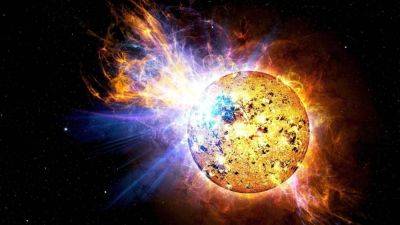
Solar storm ALERT! Solar flare eruption hurls CME towards the Earth; Will it hit?
Yesterday, September 11, two M-class solar flares erupted on the Earth-facing side of the Sun, and the latter of the two managed to release a large coronal mass ejection (CME) into space. According to data from NASA's Solar and Heliospheric Observatory (SOHO), it erupted on the notorious sunspot region AR3429 that recently came into Earth's view. The CME was noted to be in the range of Earth's strike zone and could deliver a glancing blow to our planet sparking a solar storm. But will it hit?
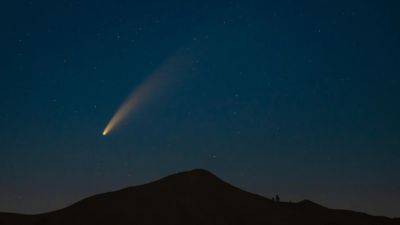
Comet Nishimura to make closest approach to Earth today! Know how to spot it
Sky gazers are in for a rare treat today. While the Taurid meteor shower is almost two months away, tonight, September 12, the night sky will offer something far more unique and spectacular, provided you are in the right place. A comet called Nishimura will be making its closest approach to the Earth tonight and it is not a sight that should be missed. The little comet is visiting our planet on its return trip to the Sun and it will not be back for another 430 years if it is lucky and is not consumed by the Sun. So, do not let this once-in-a-lifetime opportunity go. Check out how and where in the sky you can spot this rare spectacle.
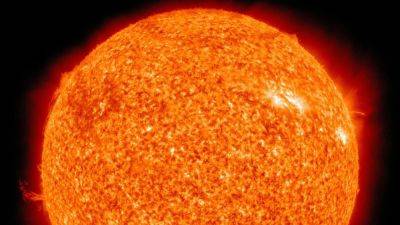
Solar storm fears rise as CME heads for Solar Orbiter; Blackouts hit America after solar flare
Solar activity has been on the rise ever since the start of the month. We have seen multiple solar flare eruptions and a couple of solar storms so far, but luckily they were not major events and their impact was very limited. However, in the last 24 hours, things have started to change. An M2.12-class solar flare erupted on the Sun, which in turn sparked a shortwave radio blackout on both the American continents. But that wasn't the worst incident of the day, as later, it was detected that a powerful coronal mass ejection (CME) cloud is headed for the the Solar Orbiter, the Sun-observing probe by the European Space Agency (ESA), and will strike it today, September 9. These events have raised concerns that an intense solar storm strike on the Earth is not too far away.
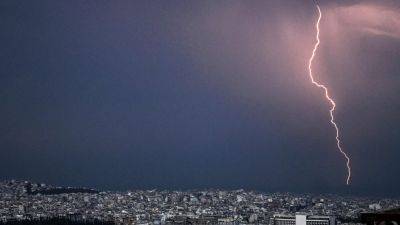
Photographer captures mesmerising jets of red lightning in rare display
In a remarkable display of nature's power, a Puerto Rico-based photographer recently captured breathtaking images of elusive 'gigantic jets' of lightning. These awe-inspiring phenomena are not only astonishingly rare but also hold 50 times more energy than the average lightning bolt.
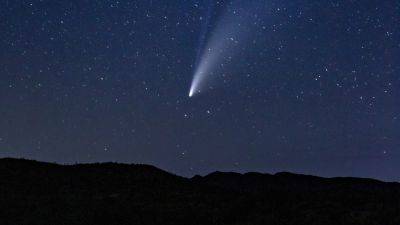
Catch a glimpse of Comet Nishimura C/2023 P1, it will not return for 400 years
A rare comet will pass Earth in September and it is one of the rarest cosmic events that can be seen with the naked eye. Viewers who like to capture such events can watch Comet Nishimura pass on the northeastern horizon on September 12. The comet was discovered last month. Now, it will be seen passing our planet and we can catch a glimpse of this rare comet which will not be seen again for the next 400 years. Know more about the comet here.

Apollo-group asteroid rushing towards Earth! NASA reveals details of close approach
After numerous delays, NASA's Psyche mission is set to lift off on a SpaceX Falcon Heavy rocket from the Kennedy Space Center in Cape Canaveral, Florida. Speaking about this upcoming asteroid mission, Laurie Leshin, director of the Jet Propulsion Laboratory said, “One month out, we are in great shape”. For the unaware, the Psyche mission will study an asteroid known as 16 Psyche, which is made up of gold, nickel, and iron deposits. According to NASA, it could be worth more than the world's economy put together! Other than its gold-rich structure, the outer surface of this asteroid is nickel-rich which resembles an early planet's core.

Blackouts, solar flares, and an impending solar storm, Earth goes through a terrifying 24 hours
With the equinox approaching on September 23, solar activities have picked up again. It is known that during this period, the Earth suffered due to a higher frequency of extreme solar activities due to the magnetic poles of the Earth making a right angle with the Sun. And in the last 24 hours, the Earth has witnessed some intense blows from the Sun. There have been instances of radio blackouts, solar flare eruptions, CME releases, and a possible solar storm that can strike the Earth at any given time. So, let us take a look at what has happened in this brief period and how it affects us.
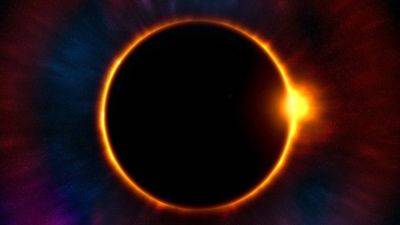
Monster sunspot triggers fears of solar storm strike on Earth; Can spark solar flare eruptions
After an unexpected solar storm event in the late night of September 2, that extended well into the morning of September 3, many scientists believe that such solar activities will now continue to increase till the equinox on September 23. During equinoxes, the Earth's magnetic poles (north and south) are at right angles to the solar wind. This makes the solar wind stronger, which can cause stronger magnetic storms. To increase the troubles, a new sunspot, AR3421, has also emerged directly in view of the Earth. The sunspot contains a mixed polarity magnetic field that can often create powerful solar flare eruptions. In case a large enough coronal mass ejection (CME) is released during the event, it can trigger a destructive solar storm.,

G2 geomagnetic storm hits Earth, sparks auroras in the US
Over the last few months, we have witnessed several solar storm and geomagnetic storm impacts, and their frequency is likely to increase even more as we approach the solar maximum which could arrive in 2025. It is a period in the Sun's 11-year cycle where solar activity is at its peak, resulting in an increased number of dangerous solar phenomena such as solar storms, flares, CMEs, geomagnetic storms, and more.
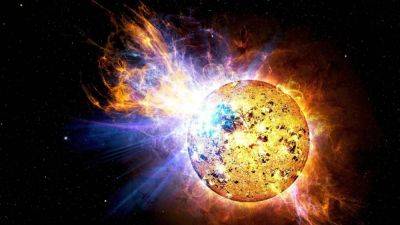
Solar storm ALERT! Magnetic filament erupts on the Sun; CME to strike tomorrow, NASA says
The last ten days have been quite uneventful in terms of Earth-directed solar activity. This was strange given there are still 6 sunspot regions present on our planet's side of the Sun. And even as the Sun nears the peak of its solar cycle in 2025, the last month has passed without any significant eruptions. But with September coming in, solar activities have again picked up. Recently, a massive magnetic filament erupted in the northern hemisphere of the Sun. The eruption resulted in a large cloud of coronal mass ejection (CME) being hurled at the Earth. NASA has confirmed that the CME will strike our planet on September 2.
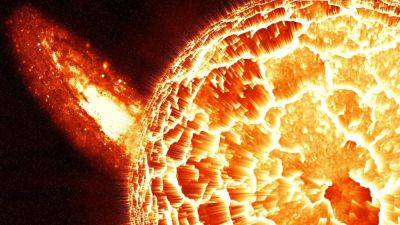
Want to go to Mars? Know the solar flare danger that can even kill you
After yesterday's success of the Chandrayaan-3 mission, the excitement in the astronomy community is at an all-time high. Many are already wondering about other new achievements India and the world can unlock. And among the huge bucket list of ideas about space exploration, one thing has always remained on top - a manned mission to Mars could pave the way for building a colony on the red planet. However, a NASA scientist has warned us that this dream may just not be possible in the near future with the current technology that we have. Why? It's because the radiation from solar flares and coronal mass ejections (CME) will kill us long before we ever reach Mars.

Chandrayaan-3: After Vikram lander success, India took a walk on the moon courtesy ISRO's Pragyan rover
Yesterday, India inked its name in the pages of history by becoming the fourth nation to successfully land on the Moon, and the first country to reach its South Pole after successfully navigating the Chandrayaan-3's Vikram Lander to the lunar surface. However, reaching the Moon was only half the task; the real work begins now. Both the Pragyan rover and the Vikram lander will now begin conducting their own set of investigations and analyze the structural composition of the Moon. And the Pragyan rover is all set to do that after having taken its first steps on the lunar surface.
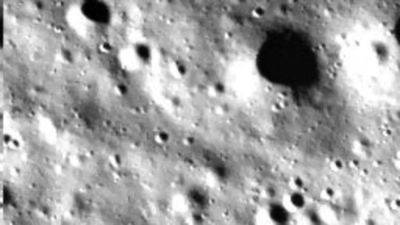
As Chandrayaan-3 makes historic moon landing, know the next steps of the ISRO mission
Chandrayaan-3 lander made history on Wednesday as it effected a successful touchdown near the South Pole of the Moon, With this mission, India also became the fourth nation in the world to touch down on the lunar surface, after the US, Russia, and China. But notably, India has become the first country to land near the lunar South Pole. The world's eyes were on India, especially after the failure of Russia's Luna-25 just days before, and it did not disappoint as the Chandrayaan-3 Vikram lander touched down on the Moon's surface at 6:04 PM IST.
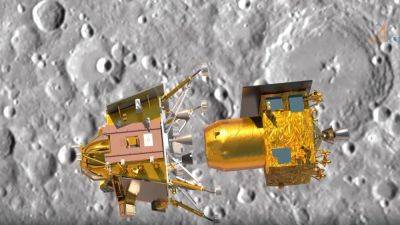
Chandrayaan-3: Tech involved in India's historic lunar mission
After the failure of Russia's Luna-25, the world's eyes are on the Indian Space Research Organization's (ISRO) Chandrayaan-3 spacecraft. India's third space mission is set to land on the lunar South Pole tomorrow, August 23, and if it succeeds, India would become the fourth nation after the USA, China, and Russia to touch down on the Moon's surface. Chandrayaan-3 is packing the latest technology that is aiding the spacecraft to fly to the moon and then land on it. From spaceflight, landing, operations, and experiments, everything is dependent on the technology packed into this spacecraft, lander, and rover. Here's everything that you need to know about the technology aboard the Chandrayaan-3 propulsion module, lander, and rover.
- 1
- 2
Popular Topics
Our site gametalkz.com offers you to spend great time reading Earth latest Tips & Guides. Enjoy scrolling Earth Tips & Guides to learn more. Stay tuned following daily updates of Earth hacks and apply them in your real life. Be sure, you won’t regret entering the site once, because here you will find a lot of useful Earth stuff that will help you a lot in your daily life! Check it out yourself!
